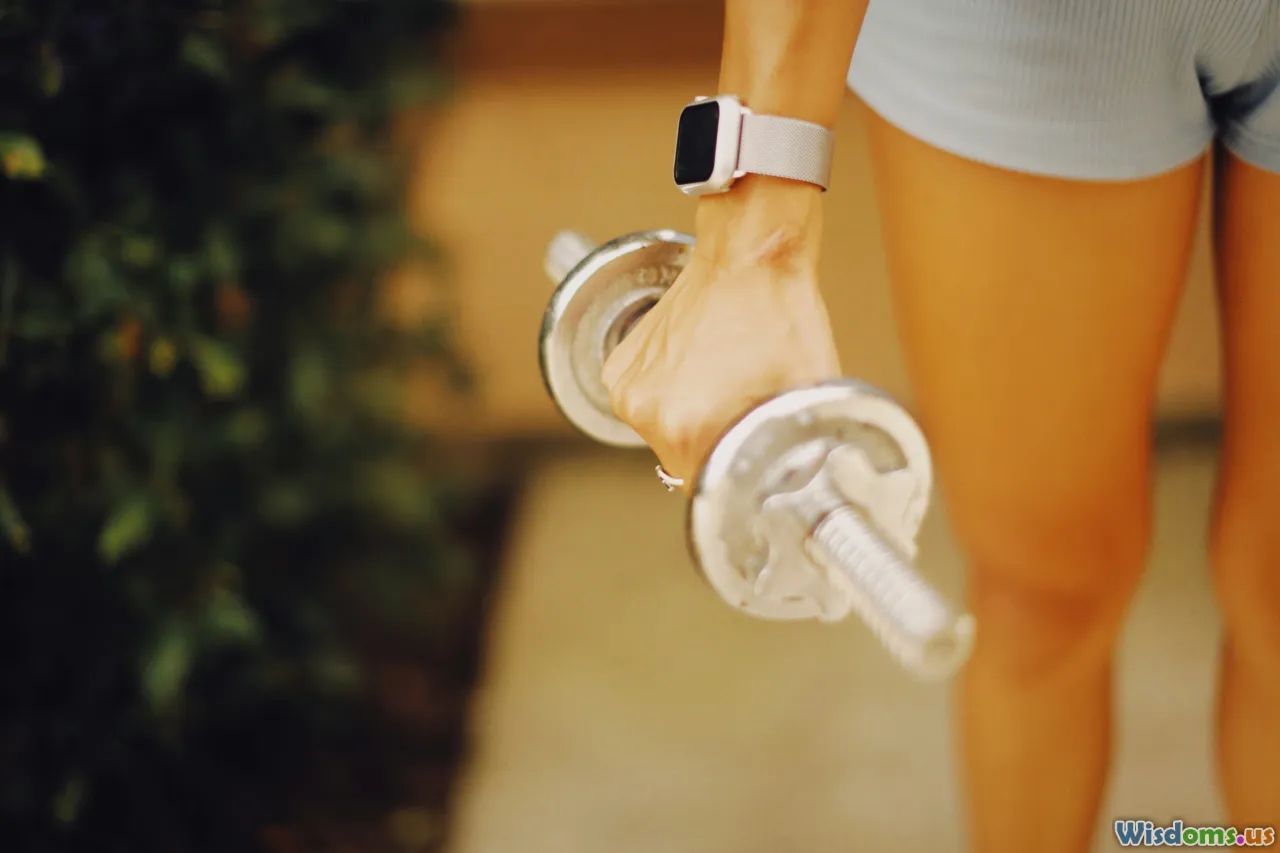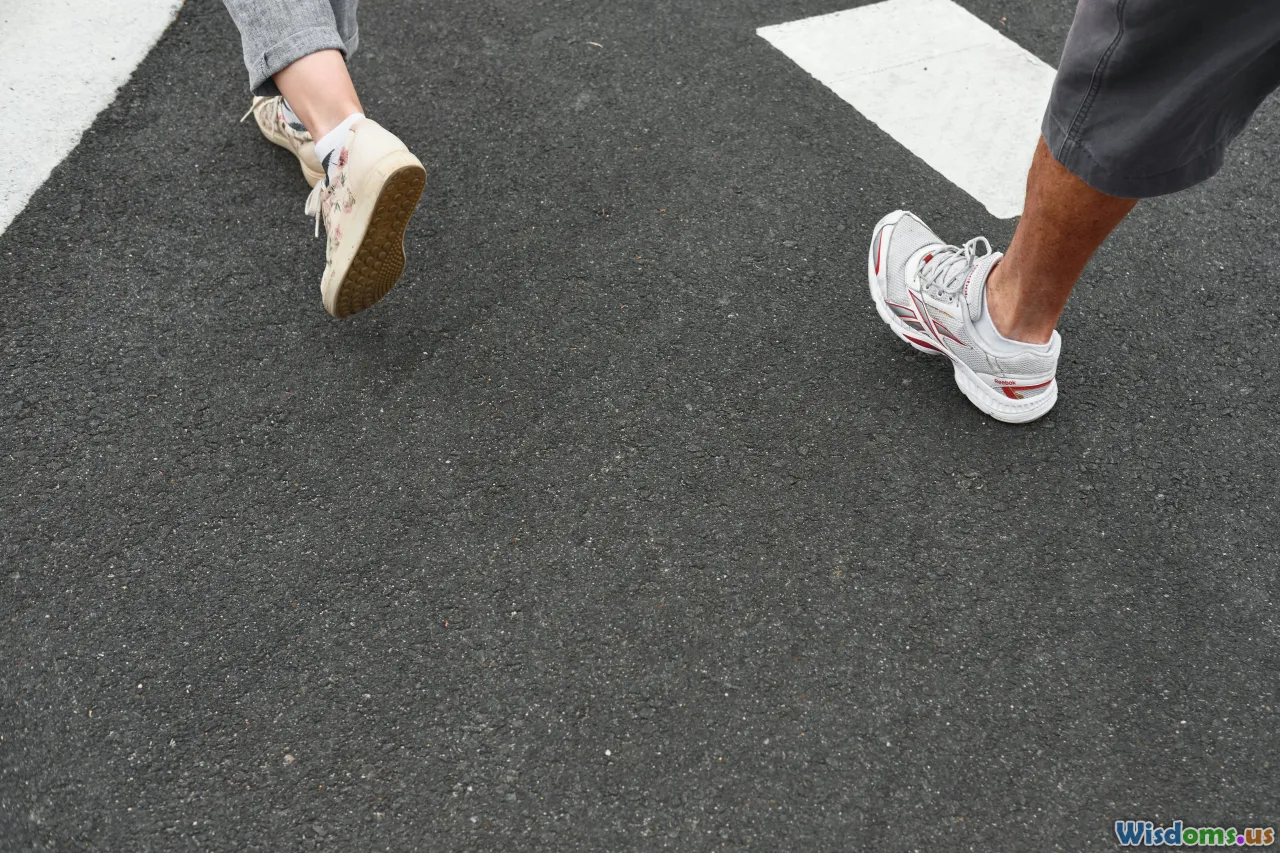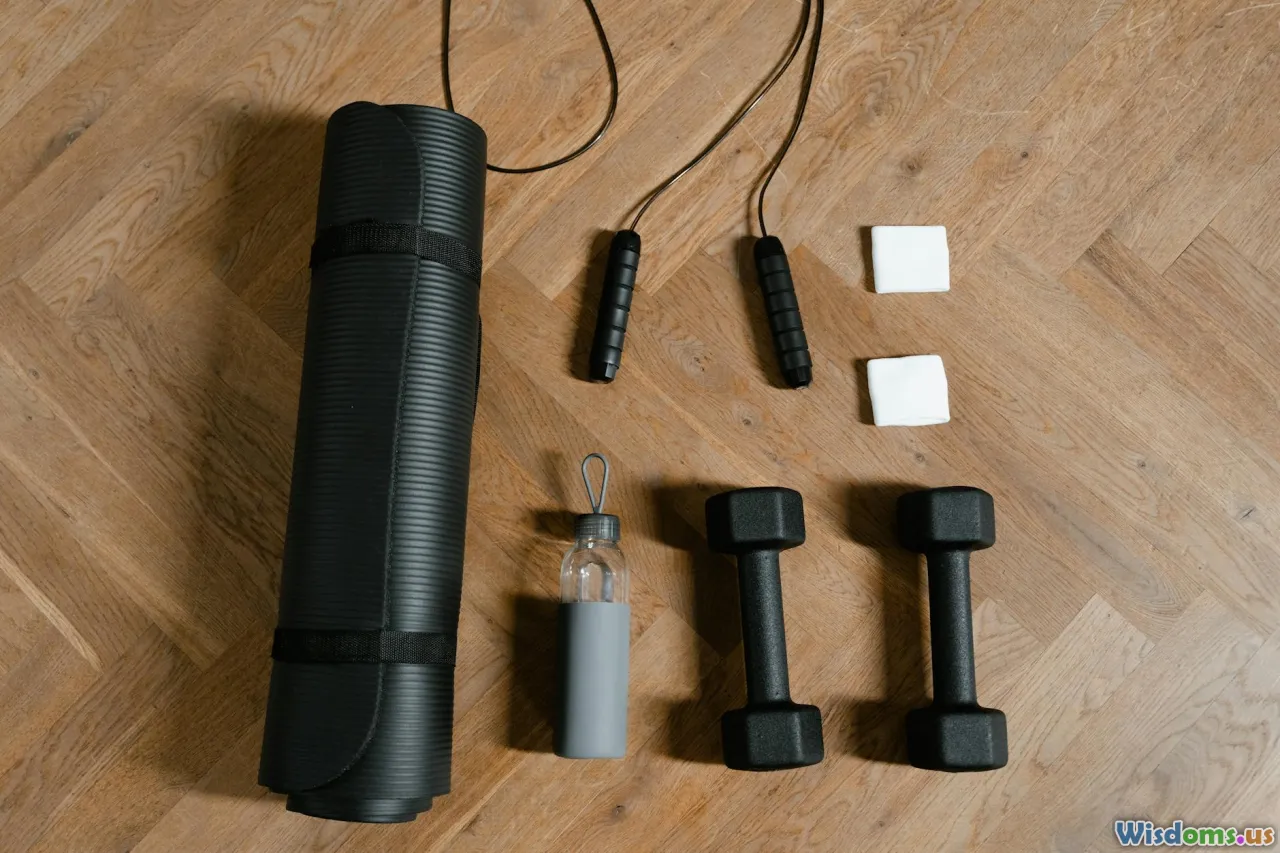
How Exercise Boosts Your Immune System Naturally
17 min read Discover how regular exercise strengthens your immune system and helps your body fight illness naturally. (0 Reviews)
How Exercise Boosts Your Immune System Naturally
Feeling run-down or catching colds too often? In our busy, always-connected world, safeguarding your health has never been more important. While vitamin supplements and green smoothies grab headlines, one of the most powerful ways to strengthen your immune defenses is ancient and time-tested: physical activity. Let’s explore the science, strategies, and simple steps behind why—and how—regular exercise keeps your immune system in prime shape.
The Immune System: Your Body's Defense Network

Your immune system is a complex, dynamic network that patrols every inch of your body, identifying and eliminating potential threats—viruses, bacteria, and even abnormal cells. It includes a range of cells, proteins, tissues, and organs working seamlessly together.
For instance, white blood cells (leukocytes), such as lymphocytes and phagocytes, act as roving sentinels—recognizing invaders, mounting a counterattack, and remembering past encounters for swifter future responses. This intricate system can be influenced, for better or for worse, by your daily habits. Sleep patterns, stress, diet—all play a role. Yet, physical activity stands out for its profound and multi-layered benefits.
Exercise: Not Just for Muscles, but Immunity

While many people associate exercise with toned abs or cardiovascular fitness, its positive effect on immune health is less obvious but no less significant. Researchers have observed that people who maintain a routine of moderate exercise experience fewer upper respiratory tract infections (like the common cold) compared to those who live sedentary lifestyles.
A study in the British Journal of Sports Medicine found that individuals who exercised at least five days a week reported nearly 50% fewer sick days from colds compared to those who were less active. It's not just about frequency, but consistency that matters—the benefit is most apparent with regular, moderate activity, not occasional strenuous bouts.
How Exercise Strengthens Immune Defenses

Increased Circulation of Immune Cells
One immediate effect of physical activity is the increased circulation of immune cells throughout the body. During moderate exercise, your blood pumps faster, mobilizing immune cells such as natural killer cells, neutrophils, and T-cells. These cells are dispatched more effectively, patrolling the body and identifying invaders with renewed efficiency.
Imagine your immune system as a well-trained security team: light, regular exercise is the call that brings all guards out on alert across the premises, making it much harder for pathogens to get past your defenses unnoticed.
Lowering Chronic Inflammation
Chronic, low-level inflammation is linked to a host of diseases—cardiovascular, metabolic, and even some cancers. Prolonged inflammation puts continued stress on your immune system, potentially weakening its response to real threats. Exercise helps tamp down this unwanted inflammation.
How? By reducing visceral fat stores and lowering the secretion of inflammatory cytokines, routine workouts help create an anti-inflammatory environment throughout your body. For people with autoimmune conditions, gentle, low-impact exercises can lend therapeutic benefit by modulating the immune response and keeping inflammation in check.
Improving Immune Surveillance
Persistent sedentary behavior is associated with immunosenescence—a gradual decline in immune function with age. However, sustained exercise has been shown to delay and even reverse some of these aging-related changes. Elderly adults who exercise have stronger T-cell responses and greater vaccine efficacy compared to their more sedentary peers, proving that it’s never too late to start moving.
The Dose Matters: Finding Balance for Immune Gains

There's a crucial catch—while a sedentary lifestyle impairs immunity, so can overtraining. High-intensity exercise sessions, especially if done to exhaustion or combined with inadequate recovery, temporarily increase cortisol (the stress hormone) and can suppress certain immune functions. This is why marathon runners sometimes report getting ill after a race.
A 2019 review in Frontiers in Immunology emphasized that moderation is the key. The "J-curve" theory illustrates this: sedentary people and over-trained athletes are at higher risk of infections, while those who engage in regular, moderate training enjoy a lower risk.
So, how much is enough? For most adults, 30–60 minutes of moderate-intensity activity—such as brisk walking, cycling, swimming, or even dancing—on most days of the week optimizes immune benefits.
Different Types of Exercise and Their Immune Impacts

Not all exercise is created equal, and varying your routine can bring broader immune advantages:
- Aerobic Activity: Improves cardiovascular health and boosts immune cell mobilization. A study from Appalachian State University found that postmenopausal women who walked 30–45 minutes a day cut their annual days with cold symptoms in half.
- Strength Training: Maintains muscle mass and bone density, both vital for healthy aging and resilience. Muscle tissue secretes myokines during contraction—tiny proteins linked to anti-inflammatory effects.
- Yoga and Tai Chi: While seemingly gentle, these mind-body practices can decrease stress hormones and inflammation markers, according to Psychosomatic Medicine. Lower stress, in turn, supports a more balanced immune response.
- Team Activities: Social exercise—like group fitness classes or sports—boosts mood, encourages regular attendance, and can indirectly benefit the immune system by lowering loneliness and stress.
Mixing aerobic, strength, and flexibility activities ensures a well-rounded approach to immune health.
The Science: How Physical Activity Alters Immunity

Ongoing research continues to uncover the molecular details of how exercise alters immunity. Some highlights:
- Short-Term: Immediately after moderate exercise, immune cells like neutrophils flood the bloodstream, and lymphatic circulation increases, allowing these defenders to scan for pathogens more effectively.
- Long-Term: Regular exercisers exhibit lower markers of inflammation (like C-reactive protein) and healthier ratios of different immune cell subtypes. Studies also point to improved antibody production after vaccinations in active individuals.
- Viral Defense: Exploratory research during the COVID-19 pandemic observed that physically active individuals had reduced risk of severe outcomes, likely due to their stronger baseline immune function and metabolic health.
- Gut Health Connection: Exercise has been linked to favorable changes in the gut microbiome, which interacts closely with the immune system. A diverse microbiome bolsters immune training and lowers the risk of infection and inflammation.
Cutting-edge research at institutions like the University of Bath and the University of California continues to map out these biochemical pathways in unprecedented detail.
Exercise as Medicine: Practical Strategies for All Ages

It’s never too early or too late to use movement as your shield. Here’s how people at different life stages can harness exercise for stronger immunity:
Children & Teens
Physical activity helps develop a robust immune system and lowers risk of chronic diseases in adulthood. Encourage at least one hour of vigorous play daily: think soccer, swimming, or dancing.
Adults
Building movement into your daily routines might mean cycling to work, brisk walks during lunch, or group fitness classes. Mix activities throughout the week to train different muscle groups and keep the immune system primed.
Older Adults
Balance, flexibility, and resistance exercises gain importance. Tai chi, light weightlifting, and neighborhood walks can reduce age-related immunosenescence. Community activities can foster consistency and lower isolation, both linked to immune health.
For People with Chronic Illness
Many chronic diseases are associated with impaired immune function—but regular, tailored movement acts as a powerful adjunct therapy. Always consult your healthcare provider for guidelines, but options could include supervised aquatic classes, gentle yoga, or stationary cycling.
Simple Tips for an Immune-Boosting Exercise Routine

Follow these actionable strategies to ensure physical activity raises—not taxes—your immune game:
- Aim for Consistency Over Intensity: It’s better to walk daily than to overexert yourself every other week. Consistency conditions both the body and the immune system.
- Listen to Your Body: Rest days are critical, especially if you’re feeling fatigued. Overtraining can backfire by raising stress hormones.
- Stay Hydrated: Even mild dehydration impairs immune cell movement. Drink water before, during, and after exercise.
- Warm Up & Cool Down: Gentle stretching preps your cardiovascular system and helps avoid injury, both of which support healing and immune readiness.
- Mind Your Diet: Exercise complements a balanced diet rich in fruits, vegetables, whole grains, and lean proteins—each vital for immune cell development and repair. Pairing good nutrition with movement amplifies both effects.
- Prioritize Sleep: Regular exercise helps you sleep more soundly, and adequate rest is non-negotiable for robust immune responses. Aim for 7–9 hours nightly.
Beyond Physical Gains: Mood, Stress, and Immune Synergy

It’s impossible to ignore the strong connection between mental health and immunity. Chronic psychological stress elevates cortisol, which can suppress immune function. Exercise acts as a natural stress reliever—reducing anxiety and depressive symptoms by triggering feel-good brain chemicals like serotonin and endorphins.
This creates a virtuous circle: Moving your body raises your spirits and balances hormones, making your immune system even more effective. For example, the U.S. National Institutes of Health found that participants in a 12-week walking program experienced fewer infections and reported higher overall wellbeing compared to a sedentary control group.
Real-World Inspiration: Stories of Immune Transformation

Ryan’s Revival
Before adopting a fitness routine, Ryan, a 40-year-old software developer, caught five to six colds every winter and grappled with constant fatigue. By committing to morning jogs and office stair climbs, his sick days dwindled. "Within six months," he says, "I was missing fewer days and feeling sharper than I had in years—like my body finally had my back."
Maya’s Family Challenge
Maya rallied her three kids into weekend family hikes. Not only did their collective sneezes and coughs decrease, but their moods improved and family bonds tightened. Simple, playful group activities added up to noticeable gains they could all feel.
Paramjit’s Silver Years
In her late 60s, Paramjit joined a tai chi group after years of knee trouble. Her bouts with seasonal flu became less frequent, her balance improved, and she was able to participate more actively in her grandchildren’s lives—strengthening both relationships and immune defenses in a single go.
Making Fitness Your Everyday Armor: Where to Start

Ready to use exercise as your natural immune booster? Here are steps anyone can implement today:
- Set realistic goals. Begin with 10-minute walks and build up.
- Find activities you genuinely enjoy; you’ll stick with them longer.
- Partner up for motivation—social connection itself increases immune resilience.
- Track your progress. Journaling or fitness apps can reinforce habits and milestones.
- If you have mobility issues or chronic conditions, treadmill walking, swimming, or chair exercises may be safer options. Always consult a healthcare provider before drastically changing your activity level.
In the end, the message is clear: You are not defenseless. Every walk, stretch, or dance step you take fortifies your body’s defenses from the inside out. The next time you lace up your sneakers, remember—you're not just investing in a leaner frame or a stronger heart, but in a natural immune system boost that shields you for life.
Rate the Post
User Reviews
Other posts in Sport & Exercise Immunology
Popular Posts














